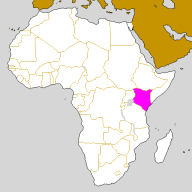 Vicki Sare, who leads a team of 16 geologists and engineers specializing in 3D visualization.
Vicki Sare, who leads a team of 16 geologists and engineers specializing in 3D visualization. As crude oil hovers just below $50 a barrel Newsweek reports on 3D oil exploration technology.
In the old days looking for oil meant poring over lines drawn on two-dimensional charts that showed the rough locations of fault lines and other topographical features, providing hints about the presence of underground structures that might contain oil. Today, with a click of a mouse you can travel halfway around the world and explore massive geologic formations, grab a block of rock 20 kilometers on a side, and then zoom in to see what it holds. The journey is played out on an IMAX-like computer screen powered by a battery of high-end computers and graphics software that would make your average video gamer drool.
For the past decade, the oil industry has invested heavily in high-end, 3D computing to extend its reach and find more oil.
“One misplaced well costs us a lot of money,” as much as $40 million in some parts of the world, said Sare. “One well that we decide not to drill," she added, "saves us money that then we can put toward one that’s more economic.”
But there’s more than oil company profits at stake. With oil prices hitting new highs, proponents of the peak oil model argue that the world may be approaching the point where production can’t keep up with demand. And innovations, like 3D, are at the center of a debate over whether technology can help replace the world’s known oil supplies before they are depleted.
Some of the leading proponents of this camp, including Princeton University geology professor Kenneth Deffeyes, believe that roughly half of the world’s available supply of oil has been produced. As a result, he predicts that global production will peak sometime around Thanksgiving of next year. The resulting supply squeeze would send oil prices soaring.
“It’s like catching bass in a pond,” he said. “After you catch most of the fish, it gets harder to catch the rest.”
In the meantime, oil markets have continued to bid up prices as weekly data show available production barely keeping up with demand. And peak oil theorists say that because there are no easy solutions, this daunting energy issue is not likely to be addressed in this year's presidential campaign.
Here are some of the problems with not taking oil and gas seriously enough.
1. Oil isn't just used for gasoline. In modern agriculture 10 calories of fossil fuel are used for every calorie of food produced. Prior to the use of fossil fuel (about 200 years ago) world population was under 2 billion. In just 200 years with the use of masses of fossil fuels it's grown to over 6 billion. It's very doubtful we could continue to feed as many people without fossil fuels for fertilisers, pesticides etc.
2. Our national and global economy depends on cheap oil. Most of the things we buy are now produced on the other side of the Earth. (Artificially) high oil prices in the 1970s caused recession, imagine what a permanent lack of oil and gas would do to economies based on perpetual growth if we haven't replaced them with renewable energy first.
3. Our modern life is based on electricity. Lots of it. Currently most of it is generated using oil, coal and gas. If we were to switch to hydrogen cars we would need to generate FOUR times more electricity (assuming of course the hydrogen is made using electricity).
Draining oilfields faster?
There’s no question that technology has revolutionized the oil industry .
But is this technology helping expand the supply of oil that can ultimately be pulled out of the ground? Skeptics say no. They argue that recent advances are only helping the industry pull oil out of the ground faster, and that the overall pace of discovery hasn’t picked up. That’s one reason the debate over peak oil tends to break along generational lines, according to Matt Simmons, a Houston investment banker to the oil industry.
“The old timers basically, who are people that were schooled in the 60s and 70s,” he said, “tend to be saying that all of this new technology allows you to see a lot more, but that the basics are still the basics. The new generation guys are convinced that we’ve totally changed the game.”
Advances in drilling techniques do hold the promise of further lowering the cost of producing new oil and extending the industry’s reach. That’s especially true in deepwater offshore fields where many promising discoveries are turning up. Aside from the huge cost of conventional steel drilling platforms, operations on gigantic rigs are subject costly interruptions from hurricanes in the Gulf of Mexico and typhoons in the Pacific rim.
“Ten years from now they’re going to become obsolete,” said Barton Smith, an economics professor at Rice University in Houston. “What they’re moving toward is robotics -- in which you literally have submarine operations. The drilling activity all occurs at the bottom of the ocean. And these robotics will have all the capabilities of being able to fix anything down there.”
Long-range communications technology is also helping to cut the cost of managing oilfields -- in some cases halfway around the world, Smith said.
“With a lot of these oilfields the trick is not just finding the oil and pulling the oil out of the ground,” he said. “But the trick is then -- through vast pipelines and so forth -- getting it to some deliverable point. And those pipelines require all sorts of types of monitoring. They’re going to monitor that from Houston.”
Technology is even expanding the definition of oil. Vast deposits of oil shale and tar sands –- formations of oil-saturated rock and sand –- have until recently been uneconomic to produce. But as recovery methods improve, and oil prices rise, production of this so-called “synthetic” oil has increased.
However currently 2 tons of sand must be mined in order to yield one barrel of oil. It takes the equivalent of 2 out of 3 barrels of oil recovered to pay for all the energy and other costs involved in getting the oil from oil sands.
For each barrel of oil recovered, 2.5 barrels of liquid waste are pumped into huge ponds. To replace the global usage of conventional crude would require over 700 plants and a pond of over 17,500 sq. km about the size of Lake Ontario.
New technologies are also being developed to extract oil from coal -– which remains plentiful in the U.S.
Still, even the most ardent proponents of technology say there’s no guarantee that advances will come fast enough and be applied quickly enough to head off the possibility of oil shortages in the future.
The world will use 82.3 million barrels a day in 2005, that's a cube of oil where each side is 2.5 football fields by 2.5 football fields every day. So to continue using oil at rate we are going to have to find oil at that rate which is just not happening.
In my opinion the solution is a combination of conservation, switching to electric cars & "strong" hybrid cars which can run primarily on electricity, and increasing electricity generation from clean renewable sources in a major way.
Newsweek article on Peak Oil & 3D Oil Exploration Technology
What is the Peak Oil and Hubbert's Peak Model?





























